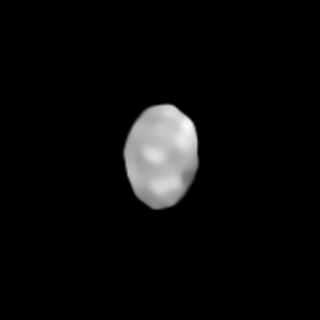
16 Psyche is a large M-type asteroid, which was discovered by the Italian astronomer Annibale de Gasparis, on 17 March 1852 and named after the Greek goddess Psyche. The prefix "16" signifies that it was the sixteenth minor planet in order of discovery. It is the largest and most massive of the M-type asteroids, and one of the dozen most massive asteroids. It has a mean diameter of approximately 220 kilometers (140 mi) and contains about one percent of the mass of the asteroid belt. It was thought to be the exposed core of a protoplanet, but recent observations cast doubt on that hypothesis. Psyche will be explored by NASA, with a spacecraft of the same name, marking the first time a manmade object will journey to a metallic asteroid, launched on 13 October 2023, with an expected arrival in 2029.
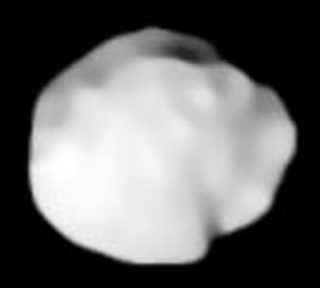
Juno is a large asteroid in the asteroid belt. Juno was the third asteroid discovered, in 1804, by German astronomer Karl Harding. It is one of the twenty largest asteroids and one of the two largest stony (S-type) asteroids, along with 15 Eunomia. It is estimated to contain 1% of the total mass of the asteroid belt.

Astraea is an asteroid in the asteroid belt. Its surface is highly reflective and its composition is probably a mixture of nickel–iron with silicates of magnesium and iron. It is an S-type asteroid in the Tholen classification system.
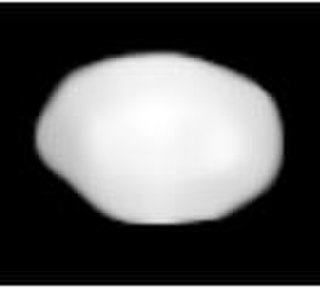
Eugenia is a large asteroid of the asteroid belt. It is famed as one of the first asteroids to be found to have a moon orbiting it. It was also the second triple asteroid to be discovered, after 87 Sylvia.
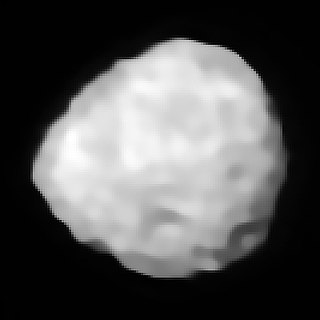
Iris is a large main-belt asteroid and possible remnant planetesimal orbiting the Sun between Mars and Jupiter. It is the fourth-brightest object in the asteroid belt. 7 Iris is classified as an S-type asteroid, meaning that it has a stony composition.
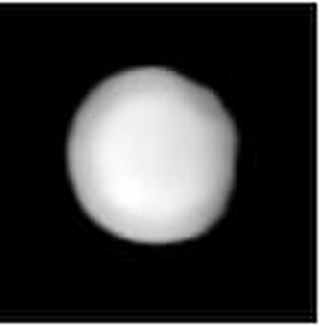
Flora is a large, bright main-belt asteroid. It is the innermost large asteroid: no asteroid closer to the Sun has a diameter above 25 kilometres, and not until 20-km 149 Medusa was discovered was an asteroid known to orbit at a closer mean distance. It is the seventh-brightest asteroid with a mean opposition magnitude of +8.7. Flora can reach a magnitude of +8.1 at a favorable opposition near perihelion, such as occurred in November 2020 when it was 0.88 AU from Earth.
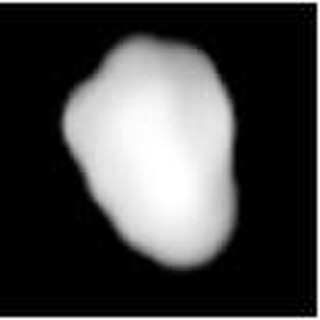
Metis is one of the larger main-belt asteroids. It is composed of silicates and metallic nickel-iron, and may be the core remnant of a large asteroid that was destroyed by an ancient collision. Metis is estimated to contain just under half a percent of the total mass of the asteroid belt.

Hygiea is a major asteroid located in the main asteroid belt. With a mean diameter of between 425 and 440 km and a mass estimated to be 3% of the total mass of the belt, it is the fourth-largest asteroid in the Solar System by both volume and mass, and is the largest of the C-type asteroids in classifications that use G type for 1 Ceres. It is very close to spherical, apparently because it had re-accreted after the disruptive impact that produced the large Hygiean family of asteroids.

Pomona is a stony main-belt asteroid that is 81 kilometres (50 mi) in diameter. It was discovered by German-French astronomer Hermann Mayer Salomon Goldschmidt on October 26, 1854, and is named after Pōmōna, the Roman goddess of fruit trees.

Ariadne is a fairly large and bright main-belt asteroid. It is the second-largest member of the Flora asteroid family. It was discovered by N. R. Pogson on 15 April 1857 and named after the Greek heroine Ariadne.
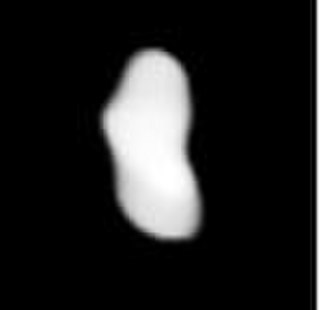
Ausonia is a stony Vestian asteroid from the inner region of the asteroid belt, approximately 100 kilometers in diameter. It was discovered by Italian astronomer Annibale de Gasparis on 10 February 1861, from the Astronomical Observatory of Capodimonte, in Naples, Italy. The initial choice of name for the asteroid was "Italia", after Italy, but this was modified to Ausonia, an ancient classical name for the Italian region.
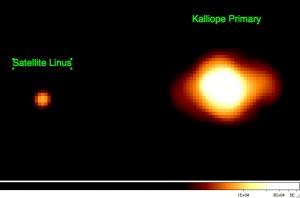
Kalliope is a large M-type asteroid from the asteroid belt discovered by J. R. Hind on 16 November 1852. It is named after Calliope, the Greek Muse of epic poetry. It is orbited by a small moon named Linus.
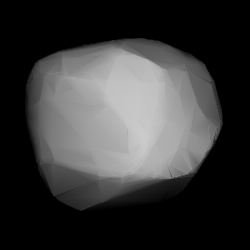
Aemilia is a large main-belt asteroid. Aemilia was discovered by the French brothers Paul Henry and Prosper Henry on January 26, 1876. The credit for this discovery was given to Paul. It is probably named after the Via Aemilia, a Roman road in Italy that runs from Piacenza to Rimini.

Elsa is a Massalia or background asteroid from the inner regions of the asteroid belt, approximately 44 kilometers in diameter. It was discovered on 7 February 1878, by Austrian astronomer Johann Palisa at the Austrian Naval Observatory in today's Croatia. The S-type asteroid has a very long rotation period of 80 hours and likely an elongated shape. The origin of its name is uncertain.

California is an asteroid belonging to the Flora family in the Main Belt. It was discovered by Max Wolf on 25 September 1892 in Heidelberg, and is named for the U.S. state of California. This object is orbiting the Sun at a distance of 2.20 AU with a period of 3.26 yr and an eccentricity (ovalness) of 0.19. The orbital plane is inclined at an angle of 5.7° to the plane of the ecliptic.
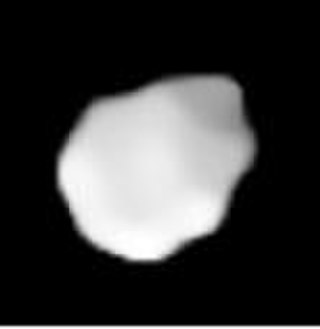
Eleonora is a large, stony main-belt asteroid that was discovered by the French astronomer Auguste Charlois on January 17, 1893, in Nice.
Friederike is a minor planet orbiting in the asteroid belt. It is a member of the Hygiea family of asteroids.

809 Lundia is a small, binary, V-type asteroid orbiting within the Flora family in the main belt. It is named after Lund Observatory, Sweden.
956 Elisa is a Flora asteroid from the inner regions of the asteroid belt, approximately 10.5 kilometers in diameter. It was discovered on 8 August 1921, by German astronomer Karl Reinmuth at the Heidelberg Observatory. The V-type asteroid has a rotation period of 16.5 hours. It was named after Elisa Reinmuth, mother of the discoverer.
1622 Chacornac is a stony Flora asteroid from the inner regions of the asteroid belt, approximately 9 kilometers in diameter. It was discovered on 15 March 1952, by French astronomer Alfred Schmitt at the Royal Observatory of Belgium in Uccle, and named after astronomer Jean Chacornac.

















